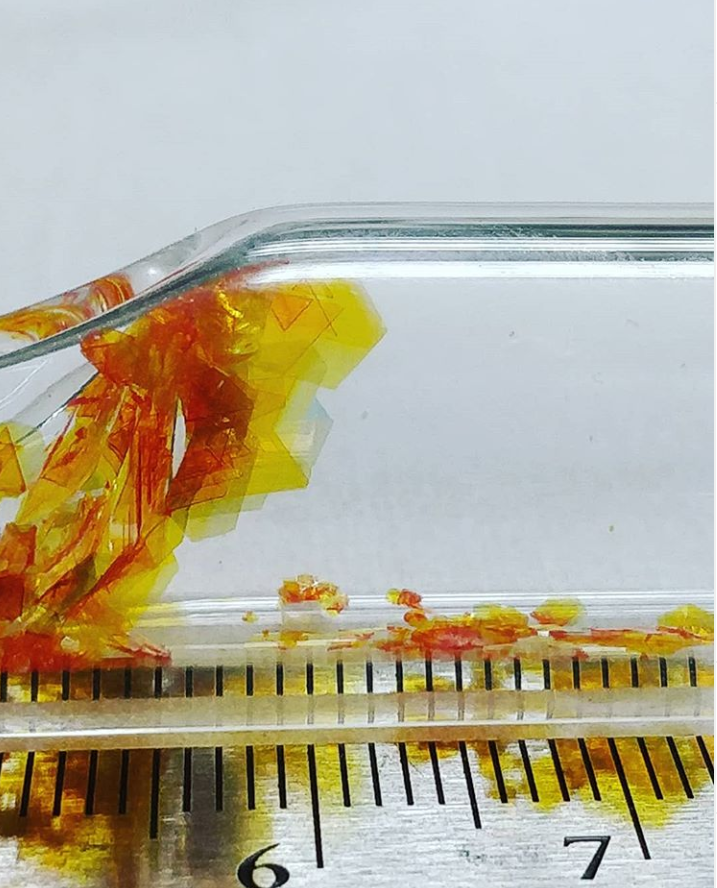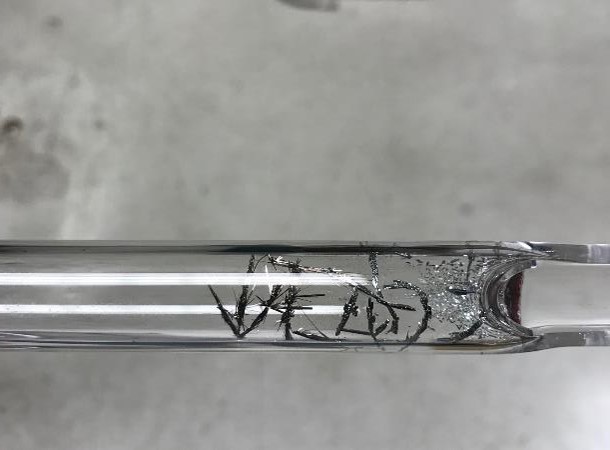While chemical vapor deposition (CVD) and other vapor deposition processing methods are essential for the integration of vdw materials into solid state electronics. It is well established that vapor deposition methods can incorporate defects that are often deleterious to a material’s properties, making it impossible to probe the intrinsic properties of these materials. However, bulk crystal synthesis techniques, such as chemical vapor transport (CVT), Bridgman, and Flux techniques are perfect for synthesizing high-quality crystals with low defect densities that allow us to study and probe intrinsic properties of many different material classes. These bulk synthesis techniques also lend themselves to studying the high quality extrinsically doped semiconductors and vdW alloys.
Part of our team focuses on novel crystal growth techniques such as Bridgman growth, chemical vapor transport, hydrothermal synthesis, and high pressure anvil cell growth to produce 6N or higher purity crystals as well as to introduce select type and amount of defects into the crystal matrix. We are currently searching for ways to incorporate functional point defects in van der Waals crystals to enhance their physical properties (mechanical, electrical, magnetic, etc.). We use Deep level transient spectroscopy (DLTS) to probe electrically active defects in semiconductor materials. After identification of these defects, we can then correlate novel material properties to functional point defects we have engineered into the crystal matrix. This technique serves to create a repository for the defects in 2D van der Waals materials, which has not been achieved till today, and which is of utmost importance, not only in the fundamental study and characterization of 2D materials, but also in the fabrication of modern quantum metal-semiconductor devices. Additionally, we use scanning transmission electron microscopy to resolve sub-Angstrom details of our lab-grown materials which allows us to directly visualize different types of defects(vacancies, adatoms, grain boundaries etc.) which is essential for understanding the atomic scale effects that defect engineering has on intrinsic host materials. Some of the example focus crystal systems include;
- 2D magnets: Dihalides and trihalides (CrI3, NiI2, FeI3, TiBr3)
- 2D excitonic semiconductors: MoSe2, WSe2, WS2, and WTe2
- 2D anisotropic materials: TiS3, ReS2, MoTe2, Tellurene, ZrSe3, and HfTe5
- Other quantum crystals: GdTe3, LaTe2, HfTe3, ZrTeP, and ZrSiSe
Publications and Patents: Our team publishes Nature, Science, and other high impact journal each and every year and these publications heavily rely on our ability produce new and highest quality crystals. Our team also holds a large number of U.S patents and patent applications on these novel crystal growth techniques.Types of Quantum Crystals











